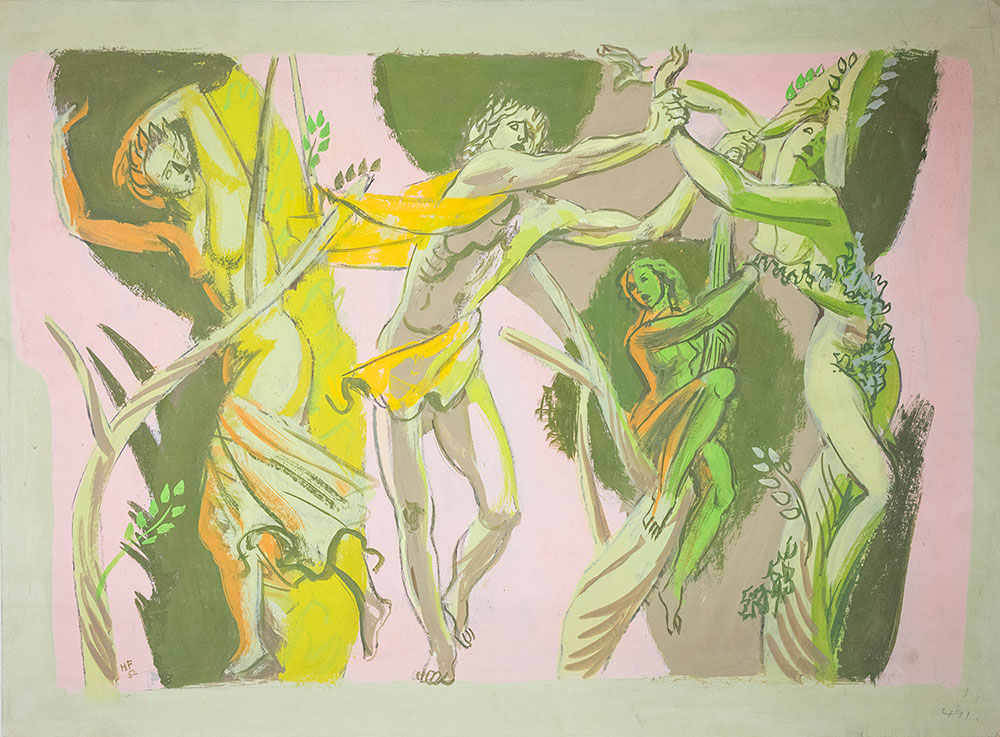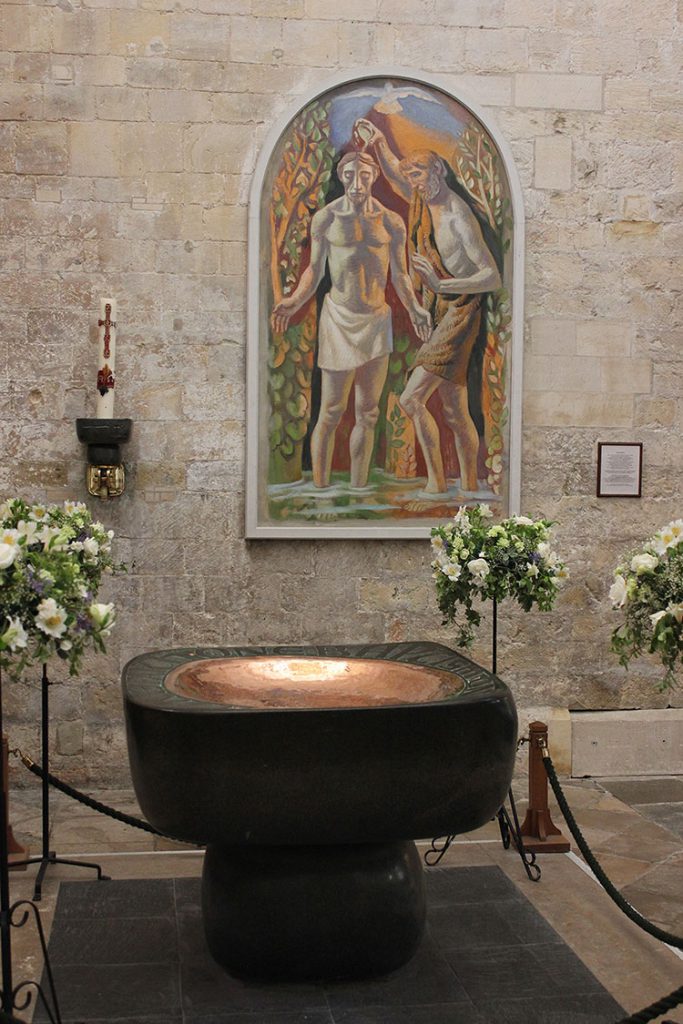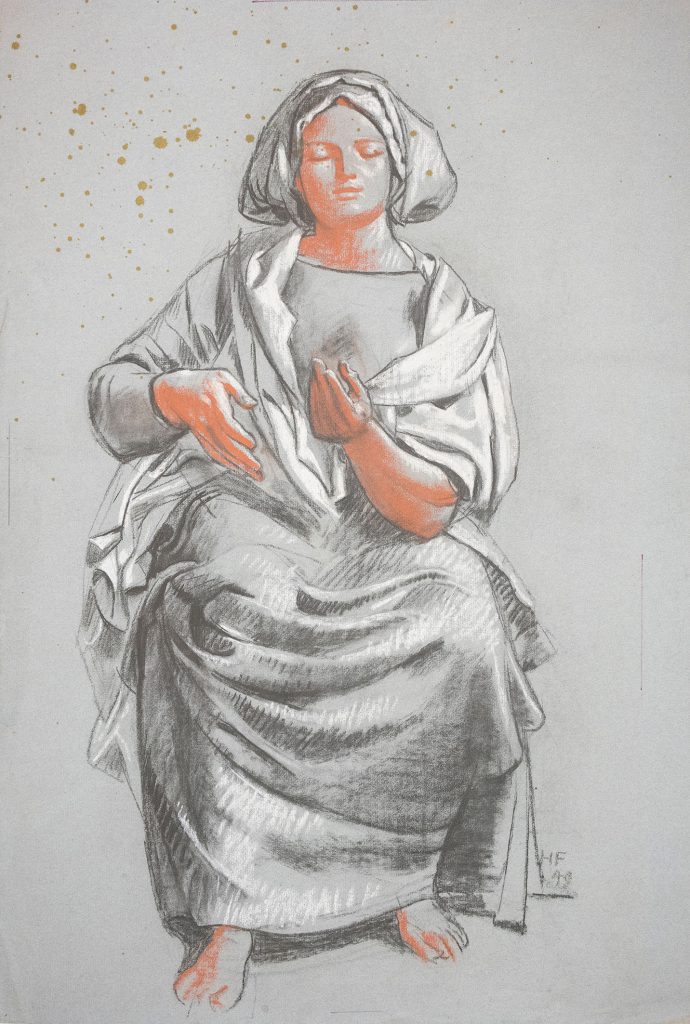
An exhibition of drawings and mural studies by the German émigré artist Hans Feibusch (1898-1998) is currently on show at the Pallant House Gallery in Chichester.
Feibusch represents a classical, figurative tradition in 20th century art which has sometimes been overlooked in favour of abstraction and other modern artistic expressions. He also has an important place in the tumultuous history of the 20th century and the revival in church patronage of art in the Modern British Period.
The Pallant House Gallery was gifted the entire contents of Feibusch’s North London Studio which included hundreds of drawings, sketchbooks and sculpture in 1997.
Hans Feibusch arrived in England in 1933 from Nazi Germany to escape persecution as a Jew. He had become an established painter in Germany, being awarded the German Grand State Prize for Painters in 1930 by the Prussian Academy of Arts in Berlin. His talent was soon recognized in England and he exhibited regularly, often with the London Group, to which he was elected in 1934. The London Group included many of Britain’s leading artists.

Kenneth Clark, later Lord Clark, was very influential as director of the National Gallery in London during the war. He introduced Feibusch to George Bell, the then Bishop of Chichester. This resulted in a number of commissions across the diocese. One of Feibusch’s most important works is ‘The ‘Baptism of Christ’ painted in 1951 which can be seen in the baptistery of Chichester Cathedral alongside John Skelton’s font sculpted out of Cornish polyphant stone and bronze in 1982/83. The maquette for the font now holds the paschal candle which represents humanity’s salvation through the passion, death, and Resurrection of Jesus Christ. It can be seen on the wall beside Feibusch’s painting. It is interesting to note that Skelton was a pupil of his Uncle, Eric Gill. Representations of the Baptism of Christ are surprisingly uncommon but there are notable similarities between Feibusch’s depiction and Piero della Francesca’s Renaissance version painted in the 1450s which is now in the National Gallery, London.
Whilst the murals deserve to be celebrated it is Feibusch’s sketches and drawings which, for me, reveal his true talent.

Feibusch’s study in charcoal and crayon of a seated woman owes much to the French Classicism of the 18th century.
The study for a mural in pastel depicts the Roman goddess of the hunt, Diana. As she bathes she is attended by nymphs who are shocked when the young hunter Actaeon comes upon them in the forest. The tension in the composition and figures’ faces hints at the tragedy which is to unfold. Actaeon will be transformed into a deer only to be hunted and killed by his own hounds.
Hans Feibusch’s figures are convincing, almost sculptural, with a quality of mass and light. His composition and draftsmanship gifts them with a grace and nobility. They represent the work of a gifted artist whose life is inexorably bound up with the extraordinary history and events of his time.
Entrance to Chichester Cathedral is free providing the perfect place to pause, reflect and pray amongst its remarkable collection of art.
‘Hans Feibusch: The Unseen Drawings’ runs until the 5th March 2017 and thanks to the generosity of sponsors, DeLonghi, admission to the exhibition is free. And if you go this weekend you will have a last chance to see ‘Idealism & Uncertainty: Classicism in Modern British Art’ which closes on 19th February 2017. Both exhibitions are at Pallant House Gallery, 9 North Pallant, Chichester, PO19 1TJ. For more information go to www.pallant.org.uk.
By Rupert Toovey, a senior director of Toovey’s, the leading fine art auction house in West Sussex, based on the A24 at Washington. Originally published in the West Sussex Gazette.